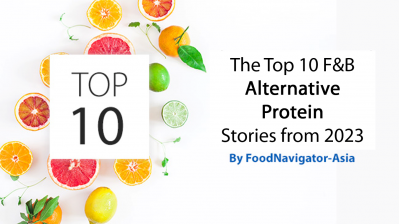Time to add value: Can Australia and New Zealand seriously compete in the alt-protein space?

While Australia and New Zealand are some of the world’s biggest agricultural producers, alt-protein producers in these countries largely rely on importing high value inputs, such as protein concentrates for plant-based meat.
According to think tank Food Frontier, the challenge lies in creating higher value ingredients, instead of importing them.
"Both Australia and New Zealand have relied heavily on mining and farming the land and exporting the raw products because there’s been a ready market for them. What is now becoming essential in order to grow their economic complexity is turning these products into higher value downstream products for both domestic and export markets.
“We’re behind other countries when it comes to the proteins and raw materials needed in some of these [alternative protein] sectors, such as the plant-based meat and cultivated meat sector. In some cases, we have to import the quality product back into the country, when we've exported useable raw product earlier at a cheaper price.
"For example, neither Australia nor New Zealand grows much corn or soy, which have predominantly been used in plant-based meat manufacturing. Australia produces large quantities of lentils, faba beans, and lupins that can be used to produce protein isolates; New Zealand is beginning to realise the value of utilising hemp and yellow pea,” said Food Frontier’s executive director Dr Simon Eassom.
Alt-protein’s value in a strong agricultural economy
Dr Eassom said that both governments have been supportive towards both the existing agricultural economy and alternative-protein market, with economic opportunity and food security driving government investments in the latter.
New Zealand’s cultivated meat start-up, Opo Bio that specialises in cell lines, shared the consensus that it is about how one complements the other.
“In New Zealand, government bodies have been trying to understand how alternative proteins fit into our food story by complementing the existing food industry.
“Based on the messages I've seen, most people think that we need to lean more into alternative proteins and diversify our farming systems.
“We always say that [cultivated meat] is an ‘and’ and not an ‘or’ so New Zealand can keep doing all of the great things with grass-fed beef and lamb, and we can also do some of the new things as well. Alternative proteins have a big market segment potential here,” said Opo Bio’s CEO Olivia Oglivie.
Case of cultivated meat in NZ: Strengths beyond developing end products
In the case of cultivated meat in New Zealand, Dr Easson said that the limited returns on invested capital might explain the lack of industry players involved in the direct production of cultivated meat.
“Large volumes of capital investments are involved to build a large-scale production facility and bioreactors, so profitability is very difficult to make a case for.
"Upside Foods in the USA has raised US$608m since it was founded in 2015 and has just committed US$140m to the production of a large scale facility in Chicago, capable of producing up to 15m kilos of cultivated chicken per year when it's fully operational.
"The current estimate of the price for cultivated meat produced by small start-ups is projected to be about $100 per kilo of cultivated meat produced, which is obviously far from competitive in the market. So, despite global investment totaling more than US$2.5bn up to the end of 2022, we're still a few years and further investment away from getting to price parity with conventional meat products."
However, New Zealand is positioned with strong research and development capabilities to develop cell lines with alternative growth factors to replace foetal bovine serum, alongside inter-government partnerships and investments.
This view was shared by Opo Bio as well.
An example of an inter-government partnership is the New Zealand government’s NZ$12mn (US$7.1mn) investment to develop future foods capabilities alongside Singapore.
Industry pushback?
Dr Eassom highlighted that pushback against alternative-protein in the regulatory space centres around product labelling due to consumer confusion between plant-based and meat products.
In the regard of cultivated meat, it is still a “drop in the ocean.”
“If we look at what [Australian cultivated meat start-up] Vow is able to do, they’re currently projected to produce about 30 tonnes of cultivated meat while the Australian beef industry produces 2.4 million tonnes of beef. It’s going to be a long time before cultivated meat catches up in terms of production, and you’re going to need multiple players to do that.
“As I said earlier, the levels of capital investment needed to produce the quantities you need to make any impact on traditional meat sector are vast. And that's the big challenge for cultivated meat wherever it is. That’s why some countries are a bit slower because they're not seeing the necessary immediate returns that they want from that and they're better off investing in other areas of alternative protein.”
Regulatory landscape for cultivated meat
Joint statutory authority in Australia and New Zealand, the Food Standards Australia New Zealand (FSANZ), regulates the food safety of the cultivated meat product at market entry.
Dr Eassom said that the regulatory process for a cultivated meat product takes approximately 18 months to two years to go to market - and on how FSANZ compares with other jurisdictions, hesaid: “It’s very difficult to make these judgements.
“In Europe, cultivated meat has been very difficult to get through as a food product because European Union (EU) regulations require it meets the standards across all participating countries in the EU. The Netherlands, hence, has taken an approach to push ahead with the consumer testing and R&D.
“The biggest advances, particularly in investment, are in countries like Switzerland, Israel, and Singapore where they want food independence and may potentially have food security issues.
"Singapore, for example, has initiated its 30-by-30 project to have 30% of its food requirements met by domestic production by 2030. With no available land for large scale animal agriculture, cultivated meat production is one potential path to that goal. They have heavily invested in enabling technologies to achieve that.”















